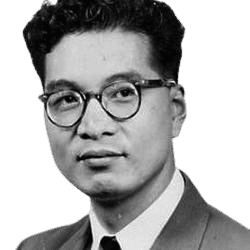Life and achievements
Early life
Yuan-Cheng Fung was born in Changzhou, China, on September 15, 1919. Fung has always had an interest in mathematics and the sciences and went on to study aeronautics at National Central University. Fung came to the United States for higher learning after he had completed his master’s degree in China in 1945 to pursue his studies at the California Institute of Technology, or Caltech for short. He was awarded the Ph.D. degree in 1948 under the supervision of Ernest Sechler, and his fields of interest were aeronautics and applied mathematics. Fung did pioneering work in aeroelasticity during the early stage of his career, especially in the structural aspect of aircraft.
However, this was different as Hong Kong-born Fung transitioned to biomechanics in the 1960s. He realized that solid mechanics principles still apply to living tissues and have far-reaching implications in engineering and medicine. Fung transferred to UC San Diego, where one of the first bioengineering schools in the world was located. He undertook pioneering work on pulmonary mechanics, blood flow, and tissue elasticity, the results of which significantly contributed to the development of the new discipline of biomechanics.
Legacy
Yuan-Cheng Fung made profound impacts in biomechanics and served extensively as an educator and mentor. His work fundamentally changed the knowledge of how biological tissues react to mechanical forces and subsequently impacted areas such as medical devices, artificial organs, and cardiovascular disease treatments. His constitutive model of soft tissue, known as Fung’s Law, is still a cornerstone of biomechanics.
Thus, Fung’s influence was not limited to the academic community as his work was quite applicable to enhancing health care quality. For instance, his research on residual stress in arteries has been used to develop medical approaches to hypertension and vascular diseases.
Fung also contributed significantly to developing biomechanics as a separate academic discipline, training many students who went on to head bioengineering and medical fields.
During his years, Fung was awarded honors, such as the National Medal of Science in the year 2000 for bioengineering. After their retirement, Fung did not leave the scientific environment and kept publishing works, giving his experience to young engineers. His contribution is honored by the Y.C. Fung Young Investigator Award, granted to young, talented biomechanics annually.
Milestone moments
Feb 14, 1948
Ph.D. from Caltech
Yuan-Cheng Fung received his Ph.D. from the California Institute of Technology in 1948, majoring in aeronautics and applied mathematics.
Aeroelasticity was a specialty of his doctoral studies, during which time he studied how structures could respond to aerodynamic loads.
This work is the early defining milestone of Fung’s career as a prominent scholar in aeronautics and later biomechanics.
Mar 4, 1966
Residency at UC San Diego and Transition to Biomechanics
Fung decided in 1966 to change the course of his work when he moved to the University of California at San Diego and joined the bioengineering department.
Fung was responsible for starting the bioengineering program at UCSD, making him one of the first to use engineering to address biological tissues.
His work during this period changed the functional mechanics of mechanical forces on living tissues, forming the basis of modern bioengineering.
Feb 18, 1972
Formation of the Biomechanics Symposium
Fung established the Biomechanics Symposium in the American Society of Mechanical Engineers in 1972 to develop a focus on bioengineering research.
It evolved into a significant bi-annual conference where scholars and professionals interested in biomechanics worldwide convened to present the latest findings and developments.
It made biomechanics a distinct field and brought together engineers, biologists, and medical practitioners.
Mar 14, 1986
The Realization of Residual Stress in Arteries
In 1986, Fung collaborated with colleagues on residual stress in arteries, which revolutionized the field of cardiovascular biomechanics.
Fung proved that residual stress is very important in determining the mechanical properties of blood vessels and their ability to respond to pressure and flow.
The findings of this research were highly relevant to the study of cardiovascular diseases and the search for therapies to enhance vascular outcomes.
